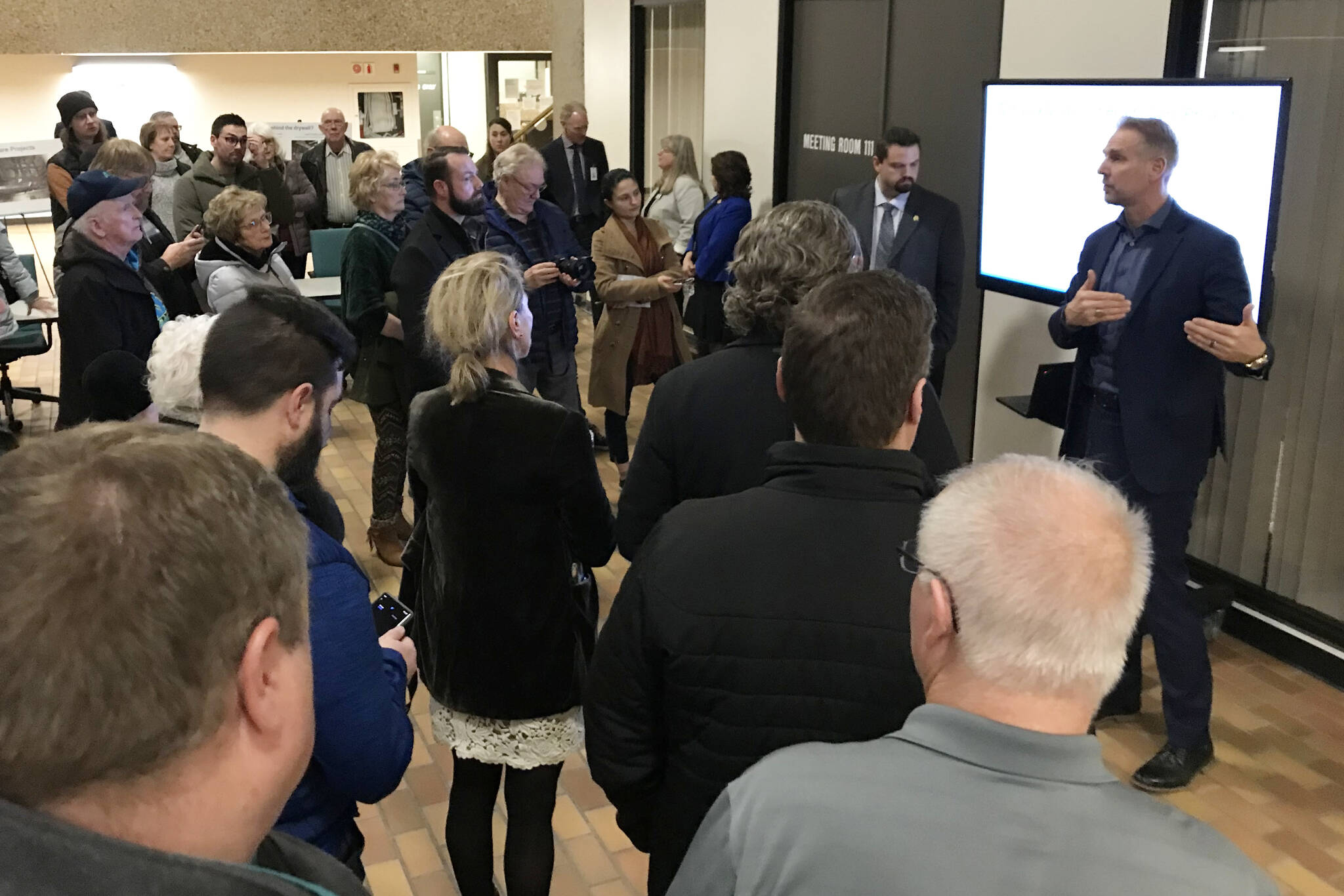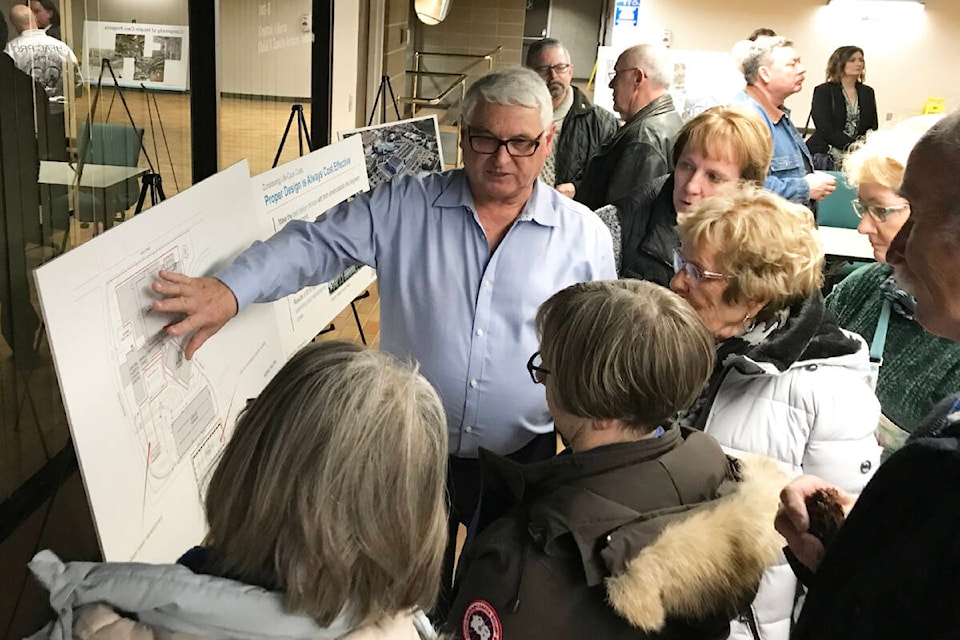Central Albertans shouldn’t expect the Red Deer Regional Hospital expansion project to be complete until 2030-2031, says the province’s infrastructure minister.
The Government of Alberta hosted a public information session for the hospital expansion project Thursday evening at the provincial building in the city’s downtown.
Minister of Infrastructure Nathan Neudorf said the biggest message the government wanted to express during the session was that “construction of a healthcare facility is complex” when compared to schools or other public buildings.
“There are complexities that most of the general public doesn’t understand and it’s difficult to explain to them because it’s tedious and very time consuming,” said Neudorf.
“Part of our efforts here tonight … is to explain the reality of what it takes to construct a building of this technology, of this size and service delivery, and for how long we hope for it to last. We’re not building this for two years, we’re building for two or three generations.”
A slideshow presented on Thursday showed a total 10-year timeframe for a major hospital project. The first six years are comprised of functional programming and design, while the final four years are construction.
“You spend that time (in the functional programming and design) well, so you don’t have the (extra) cost down the road,” said Neudorf.
“In terms of the timeframe, there is a lot of work before the public sees what they want to see – they want to see a building go up. That’s the exciting part … but in actual fact, we’ve got three or four years of work into it before you see something come out of the ground.”
The government has put out a request for tender for design, which will be awarded alongside the functional programming’s completion towards the end of March, said Neudorf.
Neudorf added that the government is aiming to complete the project by 2030, 2031 or sooner.
“We have two recent experiences in the province that are very similar in size: we’ve got Grande Prairie Hospital, which took 12-14 years, … and we have the Calgary Cancer Centre that took six to seven years,” he said.
“Obviously we’d love to build this much more along the timeline as the Calgary Cancer Centre. … What’s prudent for our government to promise or aim for is to pick the middle road, 10 years, and we aim to do it faster.
“This is about setting expectations so they know what they’re going to get and when they’re going to get it. I want to underpromise and overdeliver, not overpromise and underdeliver.”
The functional planning process is expected to be complete “slightly ahead of schedule,” Neudorf said, but added that he knows some people will be disappointed to learn an expansion won’t be complete for a number of years.
“Are people going to be upset when they see this? Yeah. They need more healthcare beds now, so this is a long time to wait,” he said.
“But this isn’t the only thing we’re working on as a government. There’s continuing care beds, there’s investment in EMS, … and investments in all kinds of other areas, as well as technology changing – surgeries that used to have people laid out for two weeks, they’re now in and out of the hospital in two days.”
sean.mcintosh@reddeeradvocate.com
Like us on Facebook and follow us on Twitter

